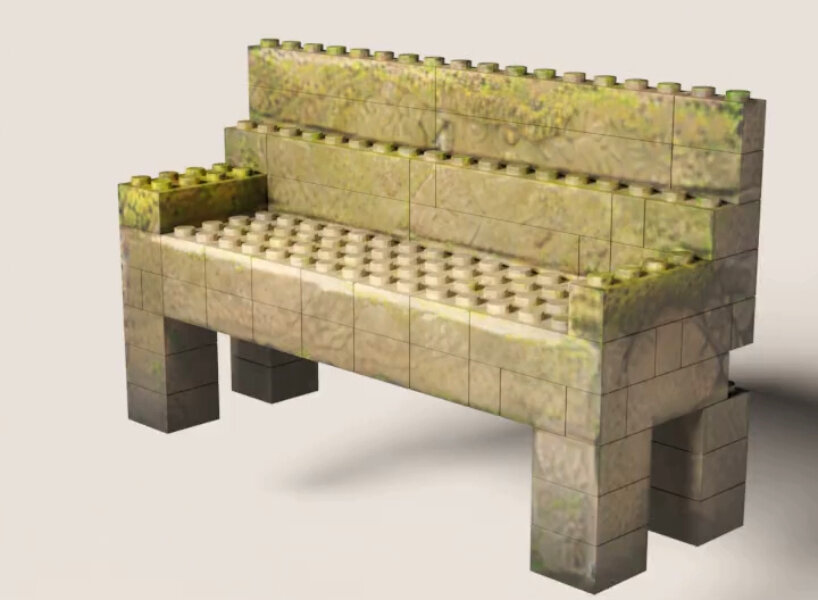AI Turns Your Text Into Buildable LEGO Designs
Researchers from Carnegie Mellon University have unveiled an exciting new AI tool called LegoGPT, designed to transform your text descriptions into buildable LEGO models. Imagine typing "a classic red telephone booth" and getting a step-by-step plan to build it with LEGO bricks – that's the magic LegoGPT aims to deliver, much like how ChatGPT responds to text prompts.
Introducing LegoGPT: Your Personal AI LEGO Designer
LegoGPT is an innovative AI language model that empowers users to generate their own custom LEGO designs using simple text inputs. Developed by a dedicated team at Carnegie Mellon University, this system can produce physically stable LEGO brick models based on what you describe. The AI was trained on a vast dataset of LEGO structures, each paired with a detailed descriptive caption.
When you provide a prompt, LegoGPT uses a "next-token prediction" method to figure out where each LEGO brick should go. Once it generates a design, you receive a plan to start building your model using your existing LEGO collection or by acquiring the specific bricks needed. A key feature is LegoGPT's built-in validity check, ensuring every brick is correctly positioned for a stable build.
 All images courtesy of the researchers from Carnegie Mellon University
All images courtesy of the researchers from Carnegie Mellon University
The Technology Behind LegoGPT: Training and Datasets
The foundation of LegoGPT is a comprehensive dataset named StableText2Lego. This dataset is impressively large, containing over 47,000 LEGO structures that represent more than 28,000 unique 3D objects. Each of these structures is accompanied by a natural language caption describing the model.
This "ChatGPT for LEGO" also includes a feature to assign colors and surface textures to the models, all derived from your initial text prompts. The researchers also note that the generated assembly plans are suitable for both human builders and robotic arms, hinting at future possibilities for automated LEGO construction.
How LegoGPT Converts Text to Bricks
The journey from a real LEGO model to a digital, AI-understandable format is fascinating. The researchers begin by converting and scanning actual LEGO models into digital representations. This involves translating each design into a sequence of text tokens. Think of these tokens as ordered descriptions of each LEGO brick, arranged from the bottom of the structure to the top, much like stanzas in a poem.
These textual sequences are then paired with descriptions of what the models actually represent. This combination forms the training dataset, which is crucial for teaching the language model how to predict accurate LEGO brick layouts from user prompts.

Ensuring Stability and Buildability
When a user provides a text prompt, LegoGPT starts constructing the model one brick at a time. After placing each brick, the system performs several checks:
- Validity: Is the brick placed correctly according to LEGO building rules?
- No Overlap: Does the brick interfere with any other bricks?
- Structural Fit: Does the brick integrate properly with the rest of the model?
During this generation process, LegoGPT explores different structural variations. Each variation undergoes a stability analysis. This is a critical step, as the system automatically discards any designs that are not physically stable – for example, structures with weak points that might easily fall apart. This ensures that the final "design plan" you receive is for a model that can actually be built and will stand on its own.

Open Access: Try LegoGPT Yourself!
The team behind LegoGPT – Ava Pun, Kangle Deng, Ruixuan Liu, Deva Ramanan, Changliu Liu, and Jun‑Yan Zhu of Carnegie Mellon University – believes in open research. They have made the full dataset, the trained models, and the source code for LegoGPT publicly available for download.
You can learn more about the researchers' work at Carnegie Mellon University and even try out LegoGPT yourself via their interactive demo site. This provides a fantastic opportunity for LEGO enthusiasts, developers, and AI researchers to explore and build upon this exciting technology.

The original article also included videos demonstrating LegoGPT:
- See how users can generate their own buildable LEGO designs
- Watch LegoGPT show users how to build their models
This development marks a significant step in combining natural language processing with 3D modeling, making creative design more accessible than ever.


